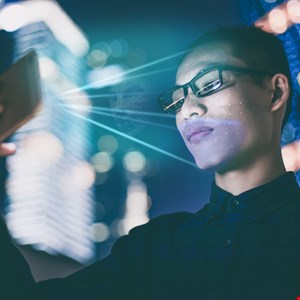- I recommend the Pixel 9 to most people looking to upgrade - especially while it's $250 off
- Google's viral research assistant just got its own app - here's how it can help you
- Sony will give you a free 55-inch 4K TV right now - but this is the last day to qualify
- I've used virtually every Linux distro, but this one has a fresh perspective
- The 7 gadgets I never travel without (and why they make such a big difference)
Federal Agencies Mostly Use Facial Recognition Tech for Digital Access

The most popular uses for facial recognition technology (FRT) by federal agencies are cybersecurity and digital access, according to a new report by the United States Government Accountability Office.
The GAO surveyed 24 agencies about their FRT activities in the fiscal year 2020 and found 75% (18) use an FRT system for one or more purposes.
Sixteen agencies reported deploying the technology for digital access or cybersecurity purposes, with two of these agencies (General Services Administration and Social Security Administration) saying that they were testing FRT to verify the identities of people who were accessing government websites.
The report stated that 14 of these 16 agencies “authorized personnel to use FRT to unlock their agency-issued smartphones — the most common purpose of FRT reported.”
Six agencies said that they had been using FRT to generate leads in criminal investigations; for example, to identify a person of interest by comparing their image against mugshots.
“In some cases, agencies identify crime victims, such as exploited children, by using commercial systems that compare against publicly available images, such as from social media,” stated the report.
Just over a quarter (27.5%) of agencies reported using FRT to monitor or surveil locations to control access to a building or facility or to detect the presence of an individual, such as someone on a watchlist.
More than half of the agencies (55%) reported FRT-related research and development that included examining the technology’s ability to detect image manipulation and researching how accurately it could identify individuals wearing masks during the COVID-19 pandemic.
The Department of Justice reported conducting applied research on the capabilities and limitations of current synthetic face detection, such as deepfakes, and the relationship between skin tone and false match rates in facial recognition algorithms.
Plans to expand their use of FRT through to 2023 were reported by 10 of the 18 agencies, with one agency planning to pilot the use of FRT to automate identity verification processes for travelers at airports.
The US Treasury Inspector General for Tax Administration reported buying an FRT system that can identify facial images of criminal suspects. The system searches an online image cache that includes evidence from seized devices for potential matches of individuals linked to other investigations.

